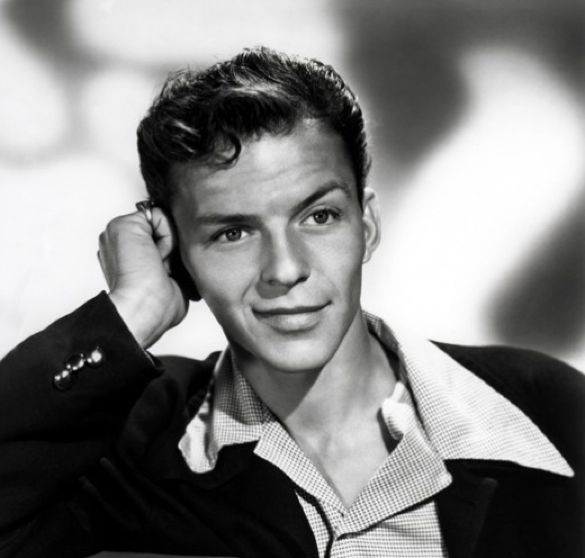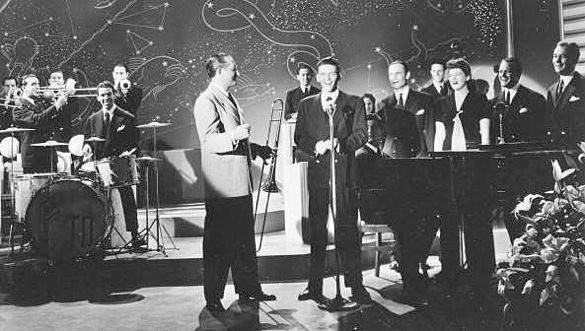Frank Sinatra holds a unique circumstance that he shares with the Tommy Dorsey Band can claim that no one else ever can. Billboard magazine might have started publishing in 1984, but it wasn't until July 20, 1940, that the magazine started publishing the 'Musical Popularity Chart', monitoring radio play and sales numbers to rank the top music of the day. Eighteen years later, Billboard changed the name to 'The Hot 100', a chart that is still the focus of most of the music industry. And on that very first chart, it was a song released by Tommy Dorsey & his Orchestra that topped the charts.
Tommy Dorsey & his Orchestra, featuring Frank Sinatra.
"I'll Never Smile Again" was written by Ruth Lowe, who was dealing the with death of her young husband. The vocals on the track was a young Frank Sinatra, just finding his way in the music business. He was joined on the vocals by The Pied Pipers, singing the role of the chorus. It topped the charts for the first twelve weeks it was published.
They struck gold again in 1942, when "There Are Such Things" topped the Billboard chart. It was again a release by Tommy Dorsey & his Orchestra, with featured vocalist Frank Sinatra. It was a popular song by Stanley Adams, Abel Baer, and George W. Meyer, written in 1942.
By the end of 1942, Sinatra would part ways with Tommy Dorsey. Sinatra, who had a big following among the ladies, and in particular the young girls who found the young man very handsome. It didn't, however, end their time on the charts, for they had recorded many songs together. That included our next #1 song on the Billboard chart, the 1943 hit, "The Blue of the Evening Sky".
Before Sinatra joined Jimmy Dorsey & his Orchestra, he performed with Harry James & his Orchestra. In fact, he was under contract to him when Jimmy Dorsey approached Sinatra, but James released him to join Dorsey, a much bigger opportunity. In fact, they had recorded a song written in 1939 by Arthur Altman, with lyrics by Jack Lawrence. It was a mild hit, but that was about the time he was leaving. Once he was free of his contract with Dorsey, Sinatra's label re-released the song, only this time it was not by Harry James & his Orchestra. Instead, it was billed as Frank Sinatra, with Harry James. So here is the 1939/1944 release, "All Or Nothing At All".
That leaves his 1945 single, "Oh, What It Seems To Be", to be his first certified solo #1 song. The song was arranged by bandleader Nelson Riddle, the man who made magic with so very many great singers and musicians over his career, including the great recordings made by Linda Ronstadt in the 1980s. But 40 years before, he was wroking his magic with Frank Sinatra, among others.
Hope you enjoyed our celebration of Frank Sinatra's first five Billboard #1 songs



No comments:
Post a Comment